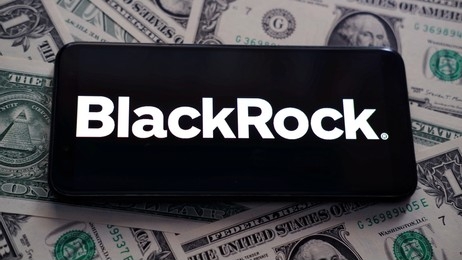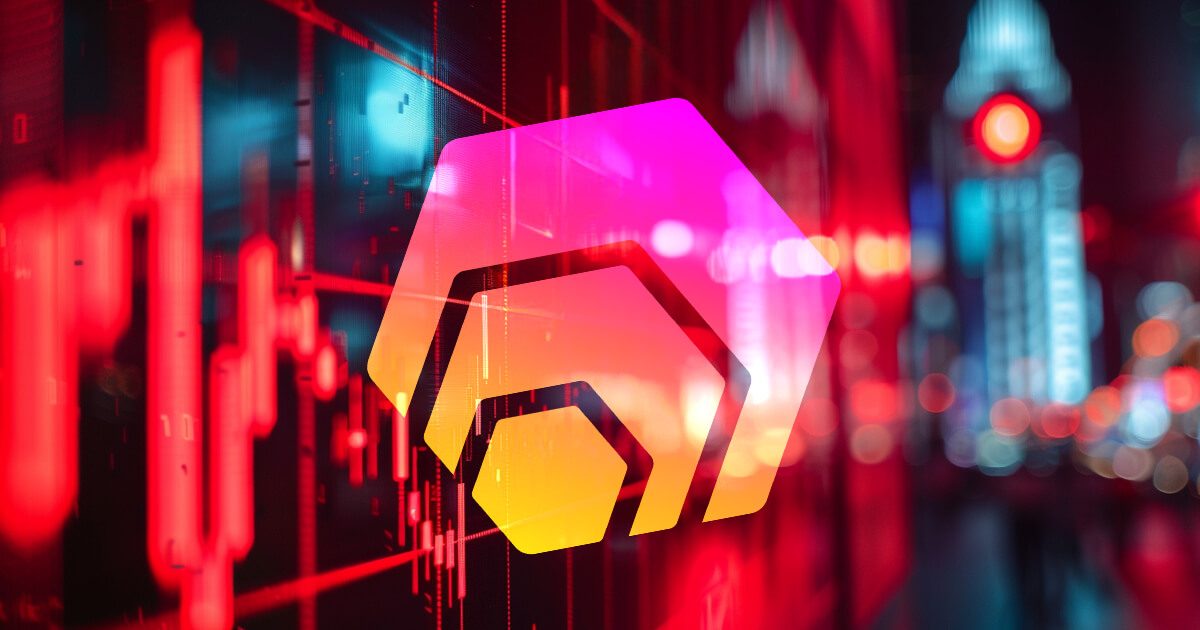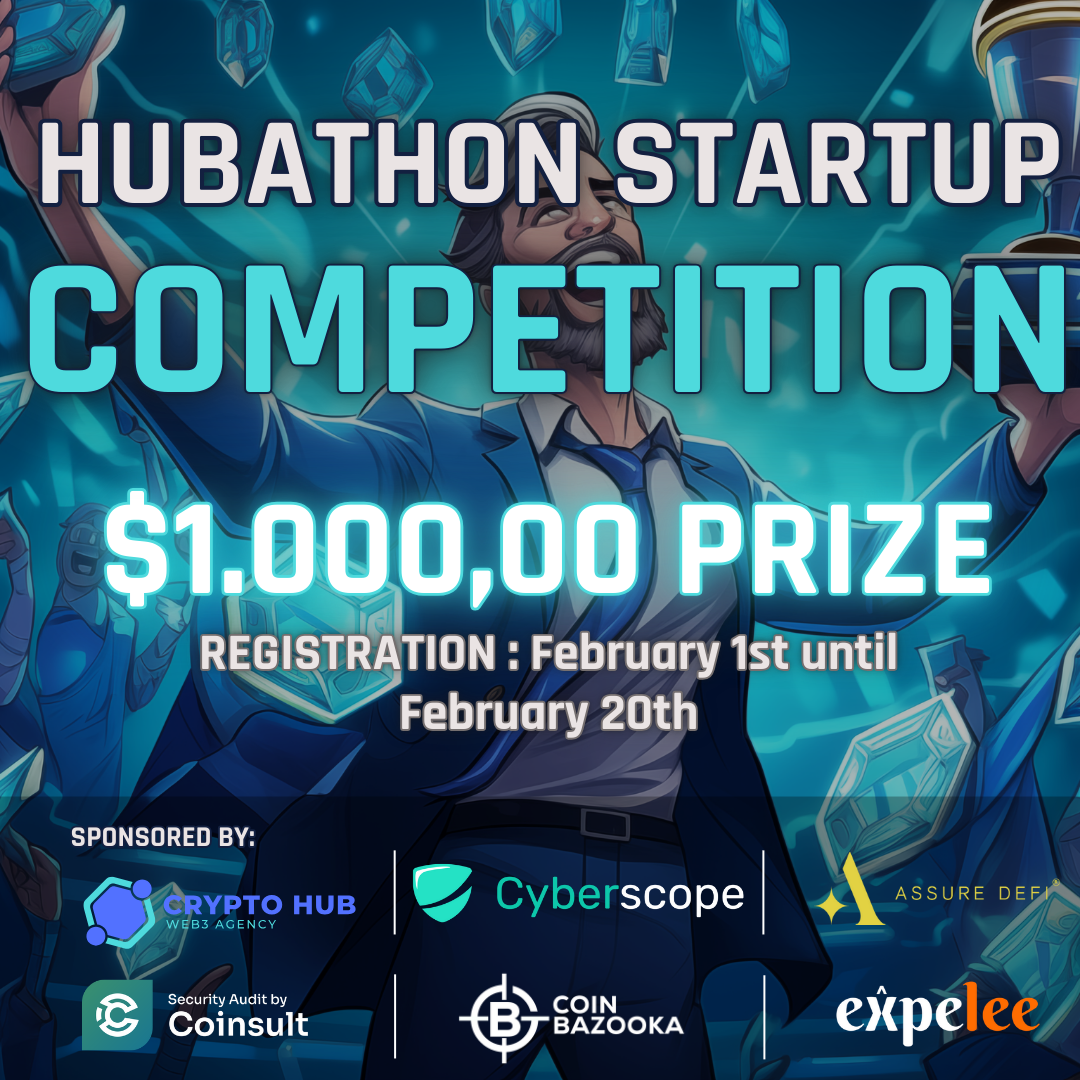Latest News
TRON Founder Justin Sun Wins Landmark Case in the People’s Court of China | MATIC News

Disclosure: This is a sponsored post. Readers should conduct further research prior to taking any actions. Learn more ›
Geneva Switzerland, June 26, 2024 – TRON DAO welcomes an unprecedented victory by its founder Justin Sun in the People’s Court of China over a landmark defamation suit filed against the Chongqing Business Media Group (“the Media”). Per court order, the Media has removed all of its false contents and issued a formal statement of apology to Sun, who has long been a target of media misrepresentations.
The Media acknowledged in the statement that it had published false and defaming contents without fact-check or evidence, severely damaging Sun’s reputation. “The rumor-monger has finally published an apology on the People’s Court’s website,” Sun said on an X post. “Although it took two years, justice has arrived.”
The apology came after a two-year legal battle. Following hundreds of hours of fact-finding and a thorough trial, the Chongqing Yubei District Court ruled in the first instance that the Media broke the law and defamed Sun by publishing entirely unverified media contents, including an article and a video. The court ordered the defendant to retract all false contents and issue a public apology to Sun in a national newspaper. Neither party appealed the decision within the stipulated time frame, making the ruling final judgment.
For Sun, the victory serves as a strong rebuttal to numerous widespread rumors and restores his personal reputation. The court reviewed extensive evidence and documentation from both sides before arriving at the verdict. The verdict sends a strong signal to all media outlets: citing unverified sources and spreading unsubstantiated information is likely breaking the law and tarnishing their own reputations.
The Buried Truth in a Storm of Media Hysteria
The case dates back to March 11, 2022 when the Media published an article on its news platform eastmoney.com. The article stated that Sun “was involved in insider trading,” “fled abroad to evade the ICO ban,” “engaged in fraud and money laundering,” and “was under investigations by the IRS and the FBI,” among other claims. The baseless article quickly went viral, getting picked up by many other media outlets, and severely damaging the reputations of both Sun and the TRON ecosystem.
These reports cited an opinion piece about Sun published by The Verge in March 2022. That piece included a series of “interviews” with anonymous sources who all vividly described Sun’s alleged wrong-doings Hollywood-style. While the story was purposefully sensationalized, the author cleverly dropped a disclaimer at the end acknowledging that he could not obtain any comments from any relevant authorities to substantiate any claims in the article. In essence, the opinion piece presented unverified stories and acknowledged them as hearsay.
Similar media peppered their audience with buzzwords like “money laundering,” “insider trading,” “investigations,” etc. In their rush to maximize exposure and clicks, these desperate media outlets quickly amplified the article in order to make it go viral in no time. Amid this frenzy, any disclaimers on lack of evidence or unsubstantiated claims were conspicuously and conveniently ignored by the media, either intentionally or inadvertently.
Defendant Guilty After Lengthy Two-Year Legal Battle
During the trial, the People’s Court of China scrutinized every detail, from the original The Verge article, the Media’s recreated contents, to the interpretations made by all other domestic media during reproduction. The court concluded that The Verge’s article lacked concrete evidence entirely and the Media‘s report was devoid of any factual basis, which materially violated Sun’s reputation.
The court underscored that the original article’s authenticity was only confirmed by the author, and it was acknowledged in the article that none of the aforementioned authorities had validated any information presented. In the final verdict, the People’s Court of China ruled that all claims of Sun’s alleged involvement in insider trading, fraud, money laundering, or any other claimed investigations and other alleged wrong-doings, are entirely unsubstantiated.
During this two-year battle, all false claims made by the Media failed to withstand scrutiny. This lengthy due process has brought the truth to light by using facts and legal measures to debunk misinformation and disinformation. This final judgment rectified the injustices Sun has long endured and presented a legal precedent for the broader blockchain community on how unfounded rumors should be handled and dispelled.
Significance of the court ruling: The Internet is not a legal vacuum, and the doers are safeguarded by law
The final ruling of the case does not hand victory over to Sun alone but also upholds the rights of individuals who are committed to their causes but fall victim to fabricated news coverage with ulterior motives. This ruling has raised the public’s legal awareness, encouraging victims of untrue news reports to assert their own interests through legal avenues.
On the other hand, this incident also alerts all content disseminators against deceptive and unreliable media sources, especially those tainted with a history of fake and biased contents. This practice runs completely against the professionalism, objectivity, and neutrality that the modern media strive to uphold.
Early in 1988, the “Reply of the Supreme People’s Court to the Defendant Status of Newspaper Publishers and the Application of Jurisdiction in Cases of Infringement of the Right to Reputation” already made it clear that news agencies have verification obligations for the news reports they publish, and both the author and the news agency shall be held legally accountable for a publication’s infringement of other individuals’ right to reputation, in which case they may be made the co-defendants.
This legal document, among many others, indicates that infringement resulting from the edition and publication of unverified information and articles will incur legal liabilities. If the infringed party is willing to arm themselves with the law and provide concrete evidence in court, it’s highly likely that the involved media will lose the case.
Sun’s landmark win is a moment of reckoning for the long-standing rumors floating around the internet. It is also a victory of the rule of law. The ruling has not only safeguarded the legitimate rights of Sun but also discouraged the spread of misinformation and disinformation. While pursuing newsworthy content is the common goal, journalism must adhere to professional ethics by ensuring facts are authentic and accurate.
About TRON DAO
TRON DAO is a community-governed DAO dedicated to accelerating the decentralization of the internet via blockchain technology and dApps.
Founded in September 2017 by H.E. Justin Sun, the TRON network has continued to deliver impressive achievements since MainNet launch in May 2018. July 2018 also marked the ecosystem integration of BitTorrent, a pioneer in decentralized Web3 services boasting over 100 million monthly active users. The TRON network has gained incredible traction in recent years. As of June 2024, it has over 239.72 million total user accounts on the blockchain, more than 7.91 billion total transactions, and over $20.60 billion in total value locked (TVL), as reported on TRONSCAN.
In addition, TRON hosts the largest circulating supply of USD Tether (USDT) stablecoin across the globe, overtaking USDT on Ethereum since April 2021. The TRON network completed full decentralization in December 2021 and is now a community-governed DAO. Most recently in October 2022, TRON was designated as the national blockchain for the Commonwealth of Dominica, which marks the first time a major public blockchain partnered
Mentioned in this article
Latest News
Why Swiss and Hong Kong crypto regulations will lead the DeFi revolution | MATIC News

The following is a guest post from James Davies, CEO of Crypto Valley Exchange.
Regulators worldwide, international organizations, and market participants have published many consultation papers, recommendations, and opinions. The writers include groups like the Global Financial Markets Association, the Institute of International Finance, the International Swaps and Derivatives Association, the Futures Industry Association, the Financial Services Forum, and IOSCO (International Organization of Securities Commissions).
All major players from Coinbase to Circle are publishing responses to the regulatory framework and legislative drafting worldwide.
All of this is brought together in an IOSCO paper, “Policy Recommendations for Crypto and Digital Asset Markets,” which, rather unbelievably, doesn’t mention permissionless protocols once and only decentralized in passing.
I pity the regulator that bases its crypto policy development on this publication. Separately, IOSCO published a “Policy Recommendation for Decentralized Finance,” which combines their analysis with the Financial Stability Board (FSB) report “The Financial Stability Risks of Decentralised Finance.”
However, and this is a major criticism, the papers miss the core idea of decentralized projects. Trying to succinctly explain where they are wrong and what they can do to shift the perspective takes more input from insiders. The essential goal of decentralized projects is “to create the project features as the result of emergent behaviors through the actions of unrelated and replaceable actors.”
These effects are emergent, making decentralized projects so difficult to regulate. The report makes some reasonable insights, such as run-risk on assets from liquidity mismatch, such as the events that collapsed TerraUSD/Luna, and the roll-forward of this hitting Celsius very reminiscent of the events in 2008, the “collateral chain” risk.
Notably, traditional finance regulators still do not cover this well, where banning new activities dominates integration and understanding.
It also makes valuable points on cross-border regulatory arbitrage; however, this is where it demonstrates very precisely that it doesn’t understand DeFi. These structures make identifying appropriate legal ownership/control and relevant legal authorities difficult. It presupposes that there is a legal ownership and control point, the antithesis of decentralization.
This doesn’t mean that there aren’t some DeFi entities that do have these, and while running via smart contracts on-chain are not more like centralized entities, these, though, will get picked up in the core of the rest of the crypto regulation.
IOSCO doubles down on these misapprehensions about how decentralization works in some of their recommendations to regulators, especially the recommendation to identify responsible persons. Comments suggesting layer-1 blockchains might be considered clearing and settlement operations feel bizarre.
Other areas to look at include leverage, lending pool structures, tokenization, pseudonymous information, reporting, IP, and off-chain/on-chain touchpoints. Continued adoption and growth are undoubted and will have major impacts on world economies and traditional finance over time.
Most notably, every respondent to IOSCO, that is, every major regulator, when asked to provide an overview of current regulatory treatment, stated that they do not have separate regulatory frameworks specially dedicated to DeFi activities. They further note that whilst respondents state that they have regulation for crypto underway, they are not specifically targeting DeFi. Respondents also express their views that existing frameworks can apply to DeFi protocols.
Like social scientists everywhere, the Bank of International Settlement also seeks to understand the DeFi landscape. Their process is being examined through the lens of categorizing DeFi. While they appear to do an adequate job in this respect, it comes across in the conventional manner of treating each project as a standalone company.
To summarize the areas of concern from IOSCO:
- Conflicts of interest arising from vertical integration of activities and functions
- Market manipulation, insider trading, and fraud
- Cross-borderrRisks and regulatory cooperation
- Custody and client asset protection
- Operational and technological risk
- Retail access, suitability, and distribution.
How should regulators look at DeFi?
Rigid classification-based regulation has led to many unintended consequences; Sarbanes-Oxley requirements drove companies away from public markets. The subprime mortgage crisis resulted from a focus on individual loans and not their aggregation. The initial responses to the rise of the Internet and digital business were slow and reactive. By the time regulations arrived, companies already had established practices. Uber and Airbnb’s growth was restricted by a patchwork of local regulations that didn’t support these business models.
Urban planners misunderstood the effect of adding roads, leading to more traffic issues rather than less. The climate models debate focuses on specifics rather than the emergent effects, clouding the issues.
Regulators should start with governance structures, not individual properties. DAOs typically have a presence of some form, such as an organization with a corporate identity, often because a Labs entity needs something to hold the equity to pay real-world bills.
These entities, though, are often controlled entirely through the DAO. Requiring DAO registration and setting up specific corporate entity types that match how they operate would add value. Setting transparency, reporting, voting, staking, delegation, and control rules would remove the ambiguity on how to operate. Weed out abusive entities that want to rug pull and encourage entities that want to operate in a decentralized manner genuinely.
There can be many further developments related to operation style, such as requiring those that border otherwise regulated activities to have the appointed people selected by the DAO to face future regulatory developments in these areas. However, engaging and setting a framework for DAO establishment would be a good start.
A second area for examination would be about mutual recognition, currently regulation is fragmented, in some areas such as derivatives markets mutual recognition works well, in payments and crypto it acts as a barrier to growth creating a difficult patchwork of regulation. If DAO regulation were recognized between major regulators, then regulating in one country would enable access to other countries, a major incentive to projects to choose a grown-up location for their DAO, a good indicator to users of the intent of those involved in the project.
More thought needs to be given to dealing with emergent properties related to aspects such as clearing and settlement. There are compelling reasons why these should exist. For a start, trading on-chain assets supported by on-chain collateral causes real issues for existing traditional finance aspects. We all want to support this tokenization and transparency push, but this doesn’t come without traditional finance equivalents. This is about the disintermediation of existing power bases and control and the empowerment of new economy models, but friction in these systems needs to drop to establish. It is almost the precise point of free markets.
Ethical behavior, transparency, and clarity at the top of the list, along with DAO registration and support, can begin this. Regulators will need to become much more educated in the mechanics of these protocols and their operations to ensure they slowly build the right regulation, not just restrictive regulation.
How Switzerland and Hong Kong have gotten right what the US gets wrong
The crypto industry is still largely in its infancy, and regulators are still figuring out how to oversee its various aspects, but not all efforts are equal.
Once a beacon of innovation, the US has become a challenging jurisdiction for crypto finance projects, let alone decentralized versions. It is well documented how the country’s relatively strong anti-crypto stance and enforcement-heavy approach has stifled growth, driving founders to seek more welcoming environments.
Meanwhile, Switzerland and Hong Kong have crafted regulatory frameworks that accommodate crypto and permissionless projects.
The Swiss Financial Market Supervisory Authority (FINMA) doesn’t regulate protocols based in Switzerland if the activities conducted on the protocol result from the actions of actors based outside Switzerland. They are accessible, transparent, and engaging. Self-regulatory approaches, in general, are well supported.
The Securities and Futures Commission (SFC) of Hong Kong assesses each Defi project on a case-by-case basis, balancing a “same business, same risk, same rules” approach for crypto in general with a more nuanced position on permissionless protocols. At the same time, the US Securities and Exchange Commission (SEC) has confused and caused the US to fall behind the pack.
The EU is focused on examining everything through a payments lens, and the UK talks a better game than it implements. By embracing crypto’s unique needs and fostering a culture of entrepreneurship, these jurisdictions have become the go-to destinations for crypto companies seeking regulatory clarity and freedom to experiment. They are likely to do the same with DeFi.
As DeFi continues to evolve and transform the financial landscape, the role of regulatory frameworks becomes crucial in shaping its trajectory. With digital assets gaining momentum, tokenization under discussion, and traditional finance entering the space, the quest for regulatory environments that not only accommodate but also nurture DeFi is intensifying more even than just centralized crypto entities.
Navigating the DeFi Regulatory Landscape
With the current hot crypto market and lots of capital flowing into projects, the number of projects establishing DAOs over the next 18 months will be huge.
From a regulatory perspective, it’s time for them to set out their intent for these entities and the services that will be possible through these protocols.
Regarding the regulatory landscape for current DeFi projects, we see why more and more industry professionals feel drawn toward Switzerland’s approach. While the EU’s MiCA Regulation offers a comprehensive, harmonized framework with detailed rules for consumer protection and market integrity – appealing for projects seeking a uniform environment for cross-border European operations – Switzerland’s principle-based approach, flexibility is more compelling for projects not focussed on payment services. Not every project fits neatly into a one-size-fits-all mold; Switzerland seems to understand that.
Switzerland’s willingness to foster a supportive ecosystem, exemplified by Crypto Valley in Zug, is remarkable. Being part of a vibrant community with access to capital and opportunities for experimentation and growth is a crypto native’s dream.
Switzerland’s regulatory philosophy and pro-business stance make it particularly appealing. Innovative projects will have a better opportunity, be more likely to get regulatory clarity early and emerge from this thriving ecosystem, pushing DeFi boundaries and shaping finance’s future evolution. Switzerland’s approach resonates persuasively.
Hong Kong: A Financial Renaissance
Hong Kong is redefining its role as a crypto hub by implementing its new Virtual Asset Service Provider (VASP) regime. This regulatory framework introduces a structured yet dynamic environment that supports crypto innovation while maintaining robust safeguards.
The comprehensive VASP licensing ensures crypto platforms meet stringent criteria for liquidity, customer protection, and cybersecurity, fostering a balanced approach to regulation and innovation. By permitting retail trading of cryptocurrencies, Hong Kong nurtures a vibrant ecosystem that attracts retail investors while upholding necessary safeguards. It has yet to develop Defi specific regulation, we can only encourage to look at this holistically, developing DAO regulation first, but the approach to the rest lends confidence that this is a good location for businesses to establish whilst we wait.
Regulatory routes forward
Countries mustn’t follow in the footsteps of those who have failed to innovate in this field. The US, for instance, has been slow to adapt to the changing financial landscape, with regulatory uncertainty stifling growth and innovation. Meanwhile, US companies keep demanding clarity on regulation, with giants like Coinbase and their legal team demanding the SEC engage in rulemaking. Similarly, countries like Japan and South Korea have struggled to integrate crypto into their traditional financial systems, leading to a lack of progress.
Countries, including the US, must divide and approach centralized and decentralized activities differently. Some decentralized activities, such as market rate set risk, have many risks that could be prevented fairly easily under the right approvals regime. We know this will come and squeeze some major players, but early transparency on the direction will save the industry a lot of costs.
Currently, we look to countries like Switzerland and Hong Kong, which have taken a proactive approach to crypto, to lead in creating a supportive regulatory environment that will foster innovation and growth in Defi. By learning from their example, other countries can catch up and move forward rapidly.
While the future of decentralized tech watches the American Dream turn into a coma, Swiss developers are pouring Aperol and planning their ski trips.
Latest News
Industry experts challenge Peter Thiel’s reservations about Bitcoin’s future price potential | MATIC News

Peter Thiel, former PayPal CEO and co-founder of Founders Fund, recently expressed doubt about Bitcoin’s future price potential, stating it is unlikely to increase “dramatically” from its current levels.
However, several industry experts challenge Thiel’s viewpoint, arguing that the flagship crypto still has significant room for growth.
Bitcoin was trading at $60,300 as of press time, down almost 2% over the past 24 hours.
Unlikely to go up
Thiel made the statement during an interview with CNBC at the Aspen Ideas Festival on June 27, where he revealed that he continues to hold “some Bitcoin” in response to questions about selling BTC and lamented not buying as much as he “should have.”
Thiel’s venture capital firm, Founders Fund, has a substantial history with Bitcoin. The firm, which began investing in Bitcoin in 2014, profited $1.8 billion by selling before the market downturn in 2022. Founders Fund also bought $100 million worth of Bitcoin in 2023, when it was trading below $30,000.
Thiel also suggested that the best time to buy Bitcoin was last year, and the flagship crypto is unlikely to grow “dramatically” in value in the coming months. He said:
“I’m not sure it’s going to go up that dramatically from here.”
Thiel did not share the reasons behind his belief, but his “succinct market call” significantly contrasts with many industry experts, who believe Bitcoin will continue to grow in value over the coming months.
Less than 1% adoption
Riot Platforms VP of Research Pierre Rochard believes Thiel is underestimating Bitcoin’s potential. He pointed to the fact that Bitcoin adoption remains below 1% globally, indicating considerable room for expansion.
Rochard added that increased adoption and integration into global financial systems could drive Bitcoin’s price significantly higher in the coming years, in contrast to Thiel’s prediction. Meanwhile, others in the industry have made similar statements, projecting significant growth for Bitcoin over the coming months.
Morgan Creek CEO Mark Yusko believes that Bitcoin’s finite supply will drive its value higher as demand increases, while ARK Invest CEO Cathie Wood believes the increasing institutional interest is a sign of Bitcoin’s strengthening position in the financial ecosystem. Her firm’s bull case for Bitcoin places the flagship crypto at a price of over $1.5 million per token by 2030 as adoption ramps up.
MicroStrategy chair Michael Saylor believes Bitcoin will “eat gold” in the coming months and eventually become the most coveted asset on the planet because it offers unprecedented opportunities for capital preservation and appreciation.
Mentioned in this article
Latest News
21Shares becomes second major firm to apply for a spot Solana ETF this week | MATIC News

Asset manager 21Shares has filed for a spot Solana exchange-traded fund (ETF), marking the second such application from a major firm this week.
The proposed 21Shares Core Solana ETF is designed to track the performance of Solana (SOL) by aggregating the notional value of SOL trading activity across major spot exchanges, according to the S-1 registration form filed with the US Securities and Exchange Commission (SEC).
Coinbase Custody Trust Company will act as the custodian.
Surging interest
The filing follows a similar application by VanEck on June 27, which led to a 7% increase in SOL’s price. However, 21Shares’ filing did not immediately impact SOL’s price, with the token trading at $140.2 as of press time — down over 6% on the day.
Beyond the US, Canadian fund manager 3iQ has also filed for a spot Solana ETF earlier this month, aiming to launch the first such product in North America on the Toronto Stock Exchange. The move highlights growing confidence and interest in Solana as a viable asset for institutional investment.
The surge in interest around Solana ETFs comes as the crypto market anticipates regulatory changes and increased acceptance. Despite the recent applications, the absence of a Solana futures product is seen as a potential hurdle for approval. However, some believe a change in leadership could facilitate the process.
Eric Balchunas, senior ETF analyst at Bloomberg, noted that the approval odds for a Solana ETF are closely tied to potential shifts in the US presidency and regulatory attitudes.
According to Balchunas:
“The knee-jerk reaction here is, ‘Oh, this will never be approved because there aren’t Solana futures,’ but if there is a change at POTUS, I think anything is possible.”
Following the approval of spot Ether ETFs in May, Bernstein analysts suggested that Solana might also be classified as a commodity. This follows the SEC’s decision to drop its investigation into Ethereum 2.0, suggesting a shift in how the agency views certain digital assets.
While the regulatory landscape remains uncertain, many industry experts believe that Solana’s prominence in the crypto market makes it a strong candidate for ETF approval.
Solana ETF proponents
CNBC’s Brian Kelly recently highlighted Solana as potentially the next major crypto asset to receive ETF approval, following Bitcoin and Ethereum. He noted the success of Bitcoin ETFs, which have collectively amassed a significant amount of Bitcoin, valued at around $58 billion, indicating strong demand for regulated crypto investment products.
VanEck’s head of digital research, Matthew Sigel, also recently made similar comments, comparing Solana to other digital commodities like Bitcoin and Ether, highlighting its use in transactions and computational services on the blockchain.
He emphasized Solana’s robust attributes, including high throughput, low transaction fees, stringent security protocols, and a vibrant community, positioning it favorably for an ETF.
As the crypto market evolves and regulatory frameworks adapt, the potential for spot Solana ETFs becoming a reality grows. Investors and industry watchers will continue to monitor developments closely, anticipating significant impacts on market dynamics and investment opportunities (OKX).
Solana Market Data
At the time of press 11:45 pm UTC on Jun. 28, 2024, Solana is ranked #5 by market cap and the price is down 6.36% over the past 24 hours. Solana has a market capitalization of $64.8 billion with a 24-hour trading volume of $2.39 billion. Learn more about Solana ›
Crypto Market Summary
At the time of press 11:45 pm UTC on Jun. 28, 2024, the total crypto market is valued at at $2.24 trillion with a 24-hour volume of $63.16 billion. Bitcoin dominance is currently at 53.09%. Learn more about the crypto market ›
Mentioned in this article
-

 Hot Projects4 months ago
Hot Projects4 months agoBitcoin Blasts Past $70,000 to Register New All-Time High | MATIC News
-

 Latest News4 months ago
Latest News4 months agoCourt upholds SEC’s unregistered securities claims against Gemini, Genesis’ Earn program | MATIC News
-

 Latest News2 months ago
Latest News2 months agoSix Coinbase customers claim the exchange is violating securities laws in new lawsuit | MATIC News
-
Hot Projects2 months ago
Bitcoin Will Be Set For New ATHs If It Breaks This Resistance: Analyst | MATIC News
-

 Hot Projects3 months ago
Hot Projects3 months agoBitcoin ETF Inflows Could Eclipse $1 Trillion, Predicts Bitwise CIO | MATIC News
-

 Hot Projects3 months ago
Hot Projects3 months agoOndo Finance Joins BlackRock Tokenized Fund As Inflows Surpass $160M | MATIC News
-

 Latest News4 months ago
Latest News4 months agoOver $1 billion wiped off HEX’s valuation following Richard Heart’s disparaging remarks | MATIC News
-

 Latest News4 months ago
Latest News4 months agoCathie Wood sees Bitcoin at $1 million sooner than 2030 after record ETF performance | MATIC News




